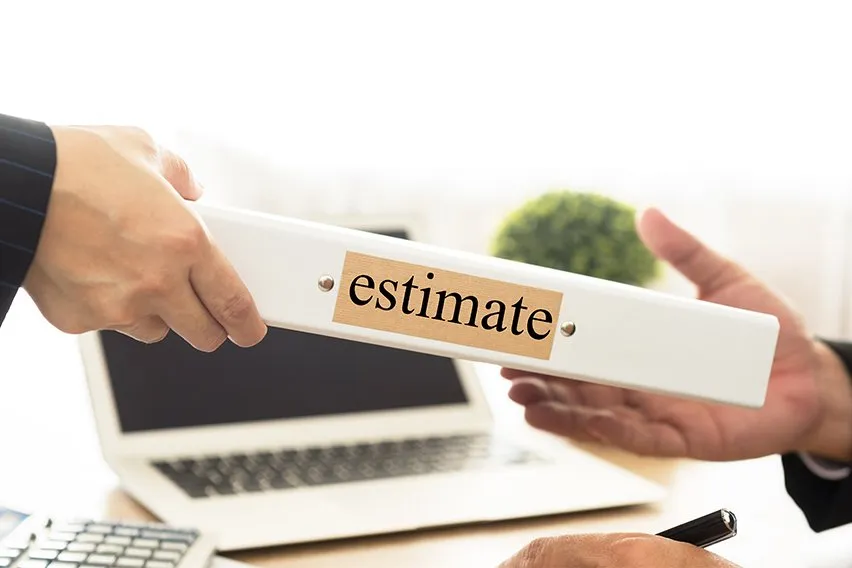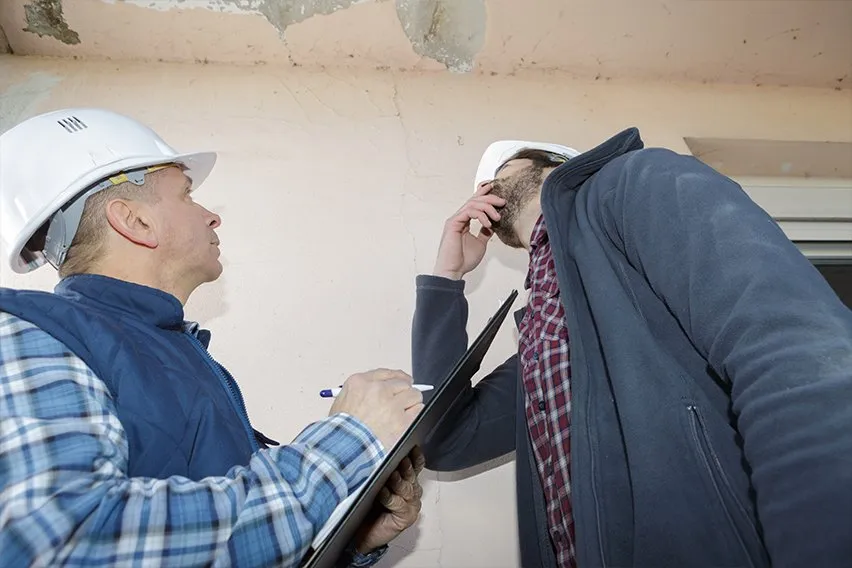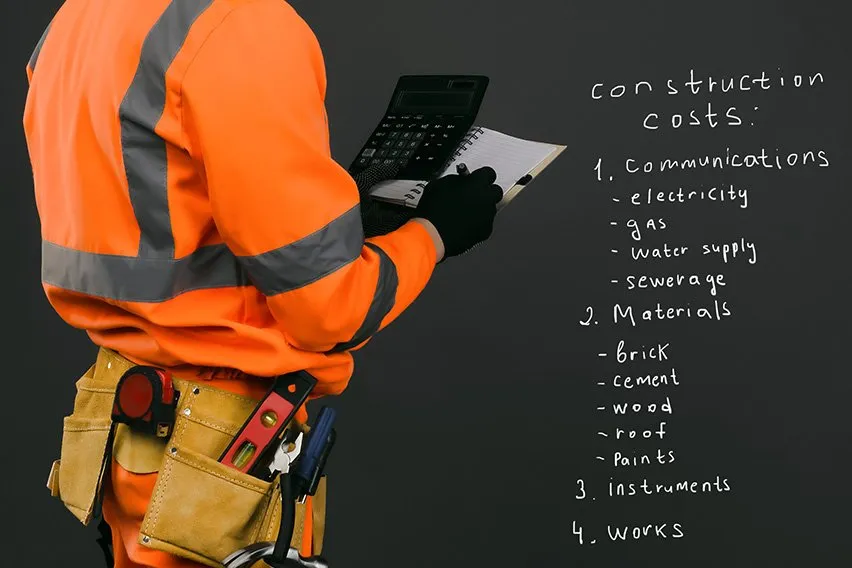Cost Estimation in Project Management: Types & Techniques

Managing a project involves multiple skill sets, as you must determine the scope of the project, how long it will take to complete, and how much it will cost. Cost estimation is a crucial step in project management because if you run out of money and resources midway through, the project will fail.
In this article, we will explore the definition of cost estimation, different types of project costs, and how to build a detailed, accurate cost estimate.
Key Takeaways
- Cost estimation is the process of predicting all financial resources needed to complete a project.
- The different types of project costs include direct and indirect costs, fixed and variable costs, and sunk costs.
- Creating a project cost estimate requires an idea of the scope and timeline of the project, the costs of resources, and skill in analyzing associated expenses.
- The best practices for cost estimation include double-checking your work, planning for unforeseen issues, and understanding the project’s background.
Table of Contents
- What Is Cost Estimation in Project Management?
- Types of Project Costs
- Project Cost Estimation Techniques
- How To Create a Project Cost Estimate
- Project Cost Estimation Example
- Best Practices for Cost Estimation
- Mastering Project Finances With FreshBooks
- Frequently Asked Questions
What Is Cost Estimation in Project Management?
Project cost estimation is the process of creating a realistic budget which is a crucial step in controlling project finances. Project cost estimation also involves determining the project’s feasibility and ensuring the project stays on track.
Project managers are tasked with forecasting the amount of money they will need to complete the project, incorporating all indirect and direct costs associated with the job. Having a strong plan in place can help prevent overspending, keep you on track with the budget, and plan for unexpected costs.
The cost estimation process differs depending on the techniques used, but it usually occurs during a project’s planning stages. Cost estimation especially comes in handy if a job is new to your company, if a project is extensive or complex, or if you have different vendors and resource options to choose from.

Types of Project Costs
The overall cost estimate depends on the complexity and scope of the project, as well as the types of costs associated with the job. These are the most common project cost types a project manager may encounter:
Direct Costs
Direct costs include all expenses that are directly attributed to the project. These are expected costs associated with a specific department or to the project itself like raw materials, labor costs, and equipment. Direct costs are usually straightforward to estimate.
Indirect Costs
Indirect costs are overhead costs and expenses that are not directly related to the job. This type of estimated costs may include administrative costs, utility bills, rent, or administration fees associated with the project.
Fixed Costs
Fixed costs are stable expenses that stay constant, regardless of the project volume and day-to-day happenings. They may include insurance payments, property taxes, and some utilities.
Variable Costs
Variable costs are those that fluctuate with the current project’s activities, like fuel costs, utility bills, or hourly labor costs. The more work done on the project, the higher the total project cost will be.
Sunk Costs
Sunk costs are any costs incurred whether or not the project is completed. These are “sunk” because the money has already been spent, and the investment is irreversible. Some examples include research and marketing costs.
Project Cost Estimation Techniques
The following are common project planning techniques used to calculate accurate cost estimates for a new project.
Analogous Estimating
The project management cost estimation technique called analogous estimating allows project managers to look at the historical data from similar past projects to understand the current project scope, timeline, cost, and resources needed. Knowing what to expect based on past projects can help create an accurate prediction of what will be needed in the future.
Bottom-up Estimating
In bottom-up estimating, a project manager will build a project’s budget starting with the individual tasks that need to be done and adding them up to create the completed project cost estimation. This type of project planning is the most detailed and is often the most accurate cost estimation technique.
Parametric Estimating
Parametric estimating uses past data from similar completed projects, with the data adjusted to fit the new job. For example, if you own a construction company that has built a row of 3 townhouses and have now been tasked to build 3 rows, each with 3 townhouses, you could review the past project budget, costs, materials, labor costs, etc. then multiply that number by 3 for a fairly accurate budget.
3-Point Estimating
Using 3-point estimating, you would develop an optimistic estimate in which everything runs smoothly, a pessimistic estimate in which everything goes wrong, and a median, most likely estimate, and then take the average of all these scenarios for an accurate estimate.
The initial 3 estimates are usually based on historical project data, but may also be based on the project manager’s best hypothesis based on the information available.
Top-Down Estimating
Top-down estimation begins with the deliverable goal, such as a specific budget. Then the project manager breaks it down into smaller categories, which are further broken down into smaller costs. This method is best used in the initial planning because it provides insight into the actual costs and resources needed to complete an overarching goal.
An example of top-down estimating would be if, during a construction job with a total $1M budget, the project manager broke costs down into categories like raw materials, labor, and administration, then further into the costs of all resources required.
Expert Judgment
If a project is new to your company or you’re simply looking for expert assistance in estimating project costs, you can ask somebody who is experienced in the type of work you’re planning. For instance, if you’re not sure how much installing a home’s sewer access will cost, asking a professional plumber may be the quickest way to find out.
Experts may have additional insights into the work you may not consider, like digging a foundation in the summer vs. the winter or the cost of importing a certain raw material vs. using a local source.
How To Create a Project Cost Estimate
Now that we understand the types of project costs and different estimating techniques, let’s delve into how to create project cost estimates.
Define the Project Scope and Requirements
Defining a clear scope and describing all project requirements will help you determine the overall cost of labor, materials, and other resources required to complete the work. The more you know about the project, the better able you will be to create an accurate cost estimation.
Identify Cost Elements
Every project will have unique cost elements or elements requiring financial allocation. Project managers break these costs down into manageable elements. Some examples include direct and indirect costs like materials, labor, machinery, insurance, facilities, vendors, and risk.
You may also want to look into tasks to be done, resources needed, how long it will take, and the tools and software required to do the job. The more cost elements you can identify in the early stages of planning, the fewer financial surprises there will be later on.
Research and Collect Data
Researching past jobs and historical data can help you understand the factors involved in your current project, making it less likely for the job to go over budget and informing an accurate project estimate.
Along with calculating the costs, you may also notice supply chain issues or other problems that occurred in the past, which can help you create a more robust contingency plan.
Choose the Appropriate Estimation Technique
Choosing the right cost-estimating techniques for your project depends on the characteristics of your project, including the complexity, the data available to you, and the client’s specific needs. In many cases, using multiple techniques may lead to a more accurate cost estimate.
Apply the Chosen Technique and Calculate the Estimate
Using project management software, you can easily apply your chosen cost-estimating technique to estimate project costs. In many cases, using 2 or more techniques will create more robust cost estimates with better evidence to support the numbers.
Document Assumptions and Rationale
An assumption is any factor that anyone on the project believes to be true or certain, without concrete evidence. Documenting and keeping track of any assumptions made while creating your project estimates will ensure your team agrees on all terms while allowing you to monitor these factors through the project lifecycle.
Review and Refine the Estimate
Once you’ve completed your project estimate, it’s time to review the information, double-check the math, and make sure you didn’t overlook anything important. It is an iterative process, as cost estimations have details and multiple moving parts that can shift over time. It’s important to update your projections as new information becomes available.
Develop a Contingency Plan
Prepare for as many unforeseen events as possible to cover unexpected expenses and handle cost overruns. The more detailed your contingency plan is, the smoother the project will run, and the more satisfied your clients will be.
Project Cost Estimation Example
Let’s use a simplified, hypothetical cost estimation example to illustrate some of the ideas above. In this example, we will use a fictitious construction company’s cost estimate process.
- Step 1: Define the scope and elements. This step involves learning the project’s size, the timeline and deliverables expected by the client, the project’s constraints, and the project goals.
- Step 2: Research, collect data, and identify cost elements, like raw material costs, labor costs, equipment, and costs incurred by the company, like utilities, legal fees, engineering fees, insurance, and administration.
- Step 3: Choose the estimation techniques you wish to use. For construction companies, a bottom-up technique is best because contractors can give accurate numbers and timelines regarding specific job duties.
- Step 4: Once you’ve determined all costs, you can add up the total for your total project cost. An estimation template like the FreshBooks’ free construction estimate template can help create a quick, customizable estimate.
Of course, in a real-world scenario, more variables, client and stakeholder input, and contingencies may come into play, making estimating project costs more challenging.
Best Practices for Cost Estimation
When working to estimate costs for a job, these are some best practices to follow to give you a better chance at success:
Involve Stakeholders
Key factors in project management are understanding the stakeholders and project team members, the goals of the project, and what results are expected. Estimating costs will be easier once you know the expected timeline and the stakeholders’ needs and perspectives. Ask questions, be forthright, and work with the team every step of the way, so they have a better understanding of the job.
Communication is key. The more you delve into expectations and assumptions, the fewer surprises or disappointments there will be down the line.
Utilize Reliable Data
For a more accurate cost estimation, use reliable, up-to-date data. Finding historical precedence, asking experts, and doing quality research on costs, timelines, and scope will allow you to use precise figures, rather than your best guess. Don’t be afraid to reach out with questions or learn from past projects, as these will provide you with the data you need to create accurate estimates.
Document Assumptions
Creating accurate estimates means clarifying and documenting all assumptions made during the estimation process. Keeping track of assumptions can ensure all stakeholders are on the same page and can help you plan for contingencies.
For instance, if you realize your estimate is based upon the assumption that all raw materials will be on-site in time to begin work, you will also know this is an area where you may need a plan in case they are not.
Communicate Effectively
Being honest and accurate with your figures and using clear, transparent communication is crucial when discussing your estimated costs. Even if you don’t have good news to share, it’s better to be straightforward from the first project planning phases to ensure the project’s success. If these matters aren’t communicated, you run the risk of running out of money or important resources before completion.
Mastering Project Finances With FreshBooks
Cost estimation is one of the most crucial processes of managing a project, especially in the beginning stages. Accurately estimating the costs of resources, expenses, and labor can ensure you don’t run out of money and can help you plan, so you will stay on track, within your budget, and on time.
Mastering your project finances doesn’t need to be complicated. FreshBooks delivers a streamlined accounting process for stress-free financial management. FreshBooks has easy-to-use, cloud-based estimating software that makes it easier than ever to manage projects from the office, from home, or when you are on the go. Using this powerful software, you can create professional estimates using customizable templates to outline your project’s scope, timeline, cost, and deliverables.
FreshBooks allows you to turn estimates into invoices, lets your clients accept estimates online, and allows you to instantly view and respond to client feedback for a seamless user experience. To learn more about how FreshBooks can make project cost estimates easier, try FreshBooks for free today.

FAQs About Cost Estimation
The following are some frequently asked questions about how to estimate project costs and the best estimation methods.
Which cost estimation method is best?
Each of the cost estimation techniques has pros and cons. It’s often best to use more than one technique for an accurate budget prediction. Combining more than one technique may also help you catch mathematical errors or holes in your plan.
What are the 5 levels of cost estimation?
The 5 levels of construction cost estimation are:
- Class 5: The rough order of magnitude (ROM) to assist with capital planning
- Class 4: To assess feasibility
- Class 3: To create a control estimate for budget authorization
- Class 2: The bid or tender estimate
- Class 1: The most accurate and detailed estimate
What is the most accurate cost estimate in project management?
The most accurate cost estimate in project management is the bottom-up method, also known as detail estimating. By getting granular and looking at each task that needs to be done, the overall timeline, cost, and scope of the project may be easier to predict.
Reviewed by
Sandra Habiger is a Chartered Professional Accountant with a Bachelor’s Degree in Business Administration from the University of Washington. Sandra’s areas of focus include advising real estate agents, brokers, and investors. She supports small businesses in growing to their first six figures and beyond. Alongside her accounting practice, Sandra is a Money and Life Coach for women in business.
RELATED ARTICLES



 Quote vs Estimate: How Do You Know Which One You Should Use?
Quote vs Estimate: How Do You Know Which One You Should Use? What Does a Cost Estimator Do & How to Become One
What Does a Cost Estimator Do & How to Become One 10 Best Construction Estimating Software in 2025 (Free & Paid)
10 Best Construction Estimating Software in 2025 (Free & Paid) Building Cost Estimator: Calculating Construction Cost
Building Cost Estimator: Calculating Construction Cost How to Estimate Construction Jobs: 10 Steps
How to Estimate Construction Jobs: 10 Steps